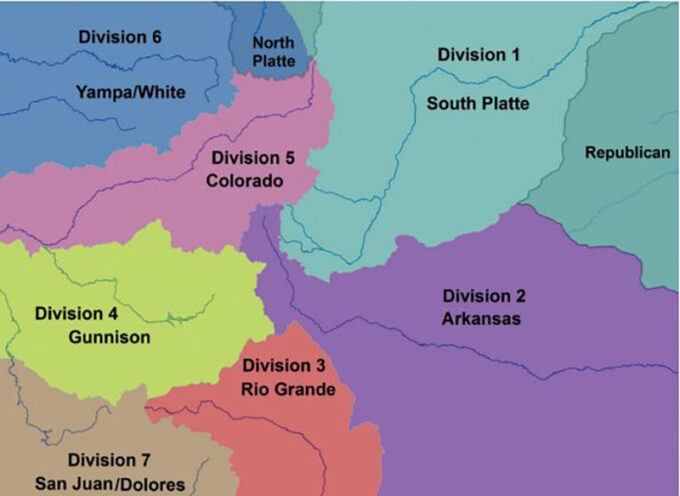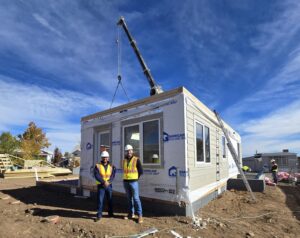Understanding Colorado Water Law: A Unique and Historic Approach to Water Rights
Colorado water law is distinct, complex, and deeply rooted in history. Unlike many other states, Colorado operates under the doctrine of prior appropriation, not riparian rights. This legal framework governs how residents, farmers, municipalities, and developers use and share the state’s limited water resources. Understanding Colorado’s system requires a dive into its origins, philosophies, and how it functions today.

A Brief History of Colorado Water Law
Colorado water law emerged during the mining booms of the mid-1800s. Water was essential for mining operations, yet many claims existed far from natural water sources. Settlers couldn’t rely on riparian rights, which tie usage to adjacent land. Instead, they developed prior appropriation, a legal doctrine adopted from mining camps in California and other arid Western states.
Colorado formally codified this system in its Constitution in 1876. Article XVI states that “the right to divert the unappropriated waters of any natural stream…shall never be denied.”
This system emphasized fairness and necessity over proximity, giving users the legal right to divert water from its natural course.
The Underlying Philosophy: “First in Time, First in Right”
The foundational principle of Colorado water law is “first in time, first in right.” This means that those who first divert water and apply it to beneficial use hold the senior rights. Those who claim water later have junior rights and must wait their turn, especially during shortages.
This doctrine creates a clear hierarchy of rights based on:
-
Priority date (when water was first appropriated)
-
Amount diverted
-
Beneficial use (e.g., irrigation, municipal use, industry)
Senior rights holders are protected from interference, even if downstream or geographically distant.
How Water Rights Are Administered
Colorado divides its water administration into seven water divisions, each with a dedicated Water Court. These courts handle water rights applications, changes, and disputes.
Key administrative roles include:
-
State Engineer: Oversees water use and measurement
-
Division Engineers: Manage regional water administration
-
Water Commissioners: Enforce rights on the ground
To obtain a new right, users must file with the Water Court and show:
-
Intent to divert water
-
A specific plan for beneficial use
-
No injury to existing rights
Once approved, the user receives a decreed water right, often linked to a specific location and use.
Read more at the Colorado Division of Water Resources
Key Differences from Other States
Colorado’s approach is more rigid and decentralized than water law in many eastern states. Here’s how it differs:
Riparian Rights (Eastern U.S.)
-
Users must own land adjacent to water
-
Shared use among riparian landowners
-
Water can’t be transported far away
-
Rights are generally not lost from non-use
Prior Appropriation (Colorado)
-
Water can be diverted long distances
-
Senior rights override junior rights
-
Use it or lose it – non-use forfeits the right
-
Tightly controlled through courts and engineers
Colorado’s scarcity of water makes this system essential to avoid conflict and overuse.
Key Concepts in Colorado Water Law
1. Beneficial Use
Water rights are not ownership of the water itself, but the right to use it beneficially. Common uses include:
-
Irrigation
-
Domestic supply
-
Municipal or industrial operations
-
Recreation
-
Habitat preservation
The state closely monitors and limits wasteful or speculative uses.
2. Non-Use and Abandonment
Water rights holders must use their full allocation regularly. Long-term non-use may lead to abandonment and loss of rights.
This ensures active, meaningful use of Colorado’s limited resources.
3. Change of Use
Changing a right’s use or location requires court approval. Applicants must prove the change won’t harm existing rights.
This process includes engineering reports, public notice, and the opportunity for objections.
4. Augmentation Plans
Junior rights holders often need augmentation plans to legally divert water. These plans offset their use by providing replacement water to senior users, often from reservoirs or return flows.
Groundwater vs. Surface Water
Colorado law treats groundwater differently depending on its type:
-
Tributary groundwater: Connected to streams; treated like surface water under prior appropriation
-
Nontributary groundwater: Not hydrologically connected; governed under different statutes
-
Designated basins: Managed by the Colorado Ground Water Commission with special rules
Understanding these distinctions is critical for any development or agricultural project.
Implications for Development
Water rights play a major role in real estate, agriculture, and industrial development in Colorado. Projects often hinge on access to secure, senior water rights. Developers must:
-
Research water rights during due diligence
-
Confirm historical beneficial use
-
Secure legal and engineering expertise
-
Avoid assuming proximity equals availability
Failing to secure rights properly can derail projects, increase costs, or result in legal battles.
Water Conservation and Future Outlook
Climate variability and population growth strain Colorado’s water supply. In response, the state promotes:
-
Conservation
-
Water banking
-
Reuse and recycling systems
-
Multi-use infrastructure projects
-
Integration with land use planning
EVstudio actively supports clients in navigating these issues during design and planning phases. Our Civil Engineering and planning teams help coordinate site infrastructure with long-term water planning.
Conclusion
Colorado water law is a unique and historic framework designed for an arid climate with limited supply. It emphasizes beneficial use, legal certainty, and seniority. The state’s courts and engineers enforce these rights diligently.
Understanding these laws is essential for any landowner, developer, or planner operating in Colorado. At EVstudio, we help clients align development plans with legal and environmental realities to ensure long-term success.










